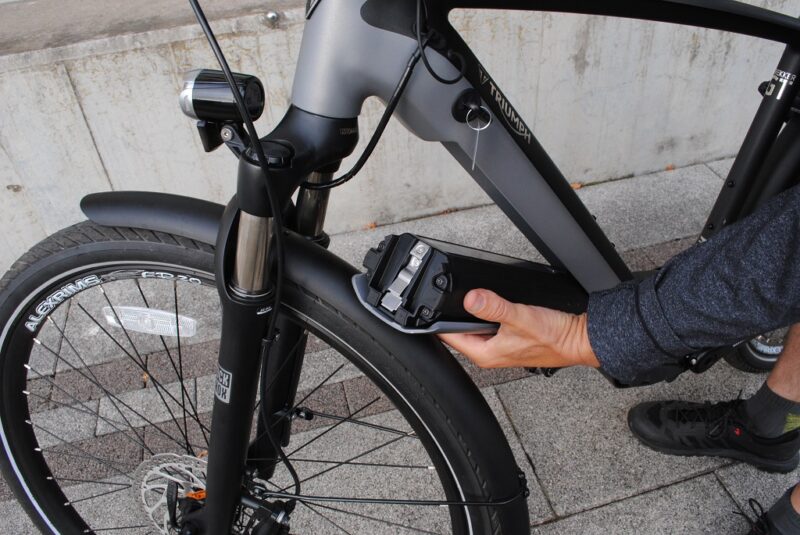
The battery life of an electric bike depends on the type of battery it uses. There are two main types of batteries: Lithium-ion and Nickel-cadmium. Both are highly efficient and are suitable for electric bikes. However, their performance and life cycle varies considerably, so users should consult the user manuals before replacing the battery.
Lithium-ion
You may be wondering, “How long do lithium-ion batteries last in an electric bike?” There are several factors that determine the battery’s lifespan. First of all, it depends on the type of battery. Lithium batteries are known to last between three and five years on average, but this can vary depending on the manufacturer. It is important to maintain your battery properly to increase its life.
The life of an electric bike battery depends on the usage. A fully charged battery allows you to cruise without concern about running out of juice. But when the battery is low, you can still pedal your bike and continue your journey. Lead-acid batteries are low-cost and easy to recycle, but they don’t last very long. Nickel-cadmium batteries are slightly longer-lasting but are harder to recycle. Nickel-metal hydride batteries are easier to recycle and offer similar performance.
Lithium-ion batteries can last for up to three years if they’re used every day. They can even last up to 1,000 full charge cycles with regular use. In addition, half-charge cycles can double battery life. It’s important to choose a battery with the right chemistry for your electric bike.
Lithium e-bike batteries are a major step in battery technology. They’re lightweight and compact and operate well in different temperature ranges. They’re also non-toxic and can be recycled. Another benefit of lithium e-bike batteries is that they can be recharged thousands of times.
Lead
The lithium-ion battery is one of two primary types of batteries used in electric bikes. Both types have their advantages and disadvantages. The lithium-ion battery has an extended life and is more efficient at generating power. However, lead-acid batteries tend to last much shorter than their lithium-ion counterparts.
Although lithium-ion batteries cost more up-front, their lifespan is significantly longer. In fact, lithium batteries can last up to five times longer than lead-acid batteries. The lithium-ion battery also is much safer than lead-acid batteries. But, unlike lithium-ion batteries, lead-acid batteries cost less over the life of the electric bike.
It is important to keep the battery in good condition. Overcharging can cause the battery to overheat. This can lead to a fire and damage the bike. Overcharging can also cause sulfation, a buildup of lead sulfate on the plates of the battery. The more the battery is overcharged, the shorter the lifespan.
Another major advantage of lead-acid batteries is their cheap price. They are available at many online stores as well as at local hardware stores. Local retailers can save you shipping costs. Radioshack and other hardware stores can sell these batteries. These batteries are also lighter, but they last only a short time compared to lithium-ion ones.
Lithium-ion batteries are more expensive than lead-acid batteries, but they are more environmentally friendly. Lithium-ion batteries are landfill-safe and have a greater lifespan than lead-acid batteries.
Nickel
Compared to lead-acid batteries, nickel-cadmium batteries provide better performance, longer life and high energy density. These batteries are great for applications such as uninterruptible power supply and generator-starting. They also last for many years in standby mode, and can provide hundreds of charge/discharge cycles.
Nickel-cadmium batteries have a higher capacity per pound than lead-acid batteries. This is important because capacity is a critical factor when buying an electric bike. However, you should be aware that these batteries are expensive and difficult to recycle. Also, nickel-cadmium batteries can suffer from memory effect, where they lose capacity over time and lose their capacity if not fully discharged regularly.
Another type of battery is called nickel-metal hydride. These batteries are more expensive than NiCd but last longer. They are more efficient than NiCd batteries and have a lower self-discharge rate. They are also easier to recycle than lead-acid batteries.
Nickel-cadmium batteries are made up of two separate plates – the positive plate consists of nickel oxyhydroxide and the negative plate contains finely divided cadmium metal. Both plates are immersed in an electrolyte made up of 20% to 35% potassium hydroxide. The positive plate converts NiOOH to Ni(OH)2, and the negative plate transforms cadmium metal to Cd(OH)2.
These batteries are the most reliable ebike batteries available on the market. They produce more power and are lighter than other lithium batteries. They are also the most expensive. Nickel batteries have a tendency to self-discharge faster than lithium batteries, making them unsuitable for regular use. However, they can still be used in electric bikes.
Nickel-cadmium
There are many benefits to nickel-cadmium batteries. For starters, these batteries are relatively quiet, have a long life, and have a relatively low maintenance cost. However, they are not as durable as lithium-ion batteries. If you’re considering buying an electric bike, you may want to consider a different type of battery.
The best choice for a price of electric bike battery will depend on how long you intend to ride. The battery will determine how long your bike can be powered for, so if you plan to ride for long distances, you should invest in a high-capacity Nickel-cadmium battery.
Nickel-cadmium batteries last longer than lead-acid batteries. However, nickel-cadmium batteries have a relatively high self-discharge rate. Because of their high energy density, they are also ideal for outdoor use. They can be recharged quickly and can withstand a range of temperatures.
Nickel-cadmium batteries last for 1,000 cycles. However, they can be prone to a problem known as “memory effect”. This occurs when a battery’s capacity drops at a particular point during a charge cycle. Although this does not decrease the battery’s capacity dramatically, it does reduce its performance. This reduced voltage can be dangerous because it can produce hydrogen gas.
Nickel-cadmium batteries are the toughest. Although more expensive, they are much more efficient than their lead-acid counterparts. In addition to a higher capacity, they also last longer and are much easier to recycle. Lastly, they are easier to store and recharge than lithium-ion batteries.
Nickel-metal hydride
Despite their many benefits, nickel-metal hydride batteries are not ideal for electric bikes because they produce a lot of heat and have a high self-discharge rate. In addition, they last a shorter time than other batteries and are much more expensive. This is one of the reasons why they are quickly losing their market value due to the rise of lithium-ion batteries.
Among the most common battery types used for electric bikes are nickel-metal hydride and lithium-ion batteries. Both of these types of batteries provide the same amount of energy per kilogram, but one type is more expensive. Nickel-metal hydride batteries tend to be much lighter and are easier to recycle than their lead-acid counterparts.
Lithium-ion batteries are more expensive than nickel-metal hydride batteries, but they are also more reliable. Compared to their nickel and Li-ion counterparts, lithium batteries are lighter and last longer. Lithium-ion polymer batteries have no liquid components and therefore have lower risk of damage. On the other hand, nickel batteries tend to self-discharge more quickly than lithium-ion batteries.
Nickel-cadmium batteries are also more expensive than their lead-acid counterparts. However, they offer more capacity per pound. This capacity is a critical factor when buying an electric bike.
Ni-MH
If you’re looking to make your electric bike run longer between charges, consider purchasing a battery with Ni-MH capacity. Ni-MH batteries are better than their lead-acid counterparts in a number of ways, including better longevity and lower price. They’re also easier to recycle. Despite these advantages, Ni-MH batteries can cause damage if they’re overcharged or undercharged.
Another important factor to consider is the size of the battery. The Ni-MH cell is smaller and has a lower weight than its lead-acid counterpart. This means that the battery is lighter and will last longer. Choosing the right battery size is essential for the safety of your electric bike.
Lithium-ion batteries are the most popular option for electric bikes because of their high energy density and low rate of discharge. These batteries are used in virtually every modern electronic device, including cell phones. They’re also capable of many discharge and recharge cycles, making them an ideal choice for eBikes. Lithium-ion batteries have a tendency to self-discharge, but the rate is relatively low, only a few percent a month.
Lead-acid batteries have several disadvantages. The lead-acid battery is more expensive and has less capacity than Ni-MH. This battery technology is less environmentally friendly because it contains cadmium, a contaminant. And it’s difficult to recycle.

